Introduction: Overview of the Conflict
The Israel-Gaza conflict continues to claim lives, with 15 Palestinians killed in the latest escalation. Tensions between Israel and Palestinian factions in Gaza have flared again, leading to violence and civilian casualties. This incident highlights the fragile situation in the region, drawing global attention and raising urgent questions about the path to peace.
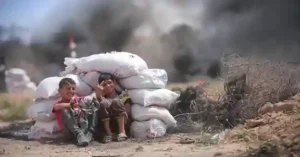
Details of the Latest Incident
The most recent escalation in the Israel-Gaza conflict resulted in the deaths of 15 Palestinians, including women and children. According to local reports, the incident occurred during a targeted airstrike by Israeli forces in a densely populated area of Gaza. The strike was reportedly aimed at neutralizing key members of a militant group accused of launching rockets into Israeli territory.
Witnesses described scenes of devastation, with homes reduced to rubble and survivors scrambling to find missing family members. Medical officials in Gaza stated that hospitals are struggling to manage the influx of injured individuals, many of whom are in critical condition.
The Israeli military confirmed the operation, claiming it was a necessary measure to counter ongoing threats from Gaza-based factions. They accused the targeted group of planning imminent attacks on Israeli civilians. However, the high civilian toll has sparked outrage and grief among Palestinians, fueling anger and protests in both Gaza and the West Bank.
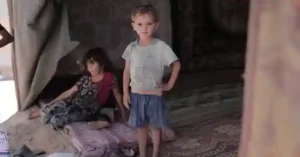
Casualties and Impact on Civilians
The airstrike that claimed the lives of 15 Palestinians has left a profound impact on Gaza’s civilian population. Among the dead were several women and children, further highlighting the indiscriminate toll of the ongoing conflict. Medical authorities in Gaza reported that over 20 others were injured, with some in critical condition, adding to the strain on already overwhelmed hospitals.
Survivors recounted harrowing experiences of homes collapsing around them, leaving families trapped under debris. Rescue teams worked tirelessly to retrieve bodies and provide emergency aid, but the densely populated neighborhoods made the efforts exceedingly difficult. Many families have been left homeless, their belongings buried under rubble, and their lives uprooted once again.
For those who survived, the psychological scars run deep. Parents mourn the loss of children, and communities struggle to come to terms with the devastation. Schools, clinics, and local businesses near the strike zone have also sustained damage, disrupting daily life and further straining an already fragile infrastructure.
The broader humanitarian impact of such incidents cannot be ignored. Gaza, already suffering from years of blockade and economic hardship, faces worsening conditions with each escalation. Limited access to clean water, electricity, and medical supplies compounds the suffering of its residents.
This tragic event has reignited anger and frustration among Palestinians, leading to protests in various parts of Gaza and the West Bank. Families of the victims demand accountability and justice, while communities brace for potential retaliatory strikes or further escalation.
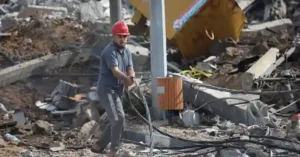
Israel’s Perspective and Response
The Israeli government has justified the recent airstrike as a targeted operation against high-ranking members of a militant faction operating within Gaza. According to Israeli Defense Forces (IDF) statements, the strike aimed to neutralize individuals allegedly responsible for planning and executing rocket attacks on Israeli cities. Military officials asserted that such actions are part of their broader strategy to ensure the safety of Israeli civilians and to deter future threats from armed groups in Gaza.
The IDF described the operation as a “precision strike” intended to minimize collateral damage. They released statements claiming that efforts were made to avoid civilian casualties, but they acknowledged that the densely populated nature of Gaza makes such outcomes challenging to prevent. The military also cited the use of residential areas by militant groups as bases for their operations, accusing them of endangering civilians by embedding themselves within communities.
Prime Minister Benjamin Netanyahu expressed his condolences for the loss of civilian lives while emphasizing Israel’s right to self-defense. In a televised address, he reiterated that the government would take “all necessary measures” to protect its citizens from the persistent threat of rocket fire.
Israeli citizens, particularly those living in border towns near Gaza, have voiced mixed reactions. While many support the government’s firm stance against militant factions, others expressed concerns about the cyclical nature of violence and the lack of a long-term solution to the conflict.
In response to international criticism, Israeli officials pointed to the challenges posed by operating in a region where militant groups often use civilian infrastructure for cover. They emphasized the importance of international support in addressing the root causes of the conflict, including the disarmament of groups they classify as terrorist organizations.
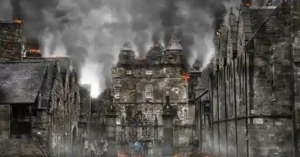
Palestinian Perspective and Reactions
The latest airstrike, which killed 15 Palestinians, has drawn widespread condemnation and grief from Palestinian leaders, organizations, and civilians. The Palestinian Authority labeled the incident a “war crime,” accusing Israel of deliberately targeting civilians and violating international law. Palestinian President Mahmoud Abbas condemned the attack as part of a broader campaign of aggression against the Palestinian people, calling for urgent international intervention to hold Israel accountable.
In Gaza, the governing Hamas organization vowed retaliation, declaring that the blood of civilians would not go unavenged. Other militant factions echoed similar sentiments, escalating fears of further violence in the coming days. These groups argue that Israel’s actions demonstrate a lack of regard for Palestinian lives and reinforce their narrative of resistance against occupation and blockade.
For many civilians, the airstrike is a grim reminder of the recurring cycle of violence that has plagued Gaza. Families who lost loved ones have expressed anger and despair, holding both Israel and the international community responsible for failing to protect them. Protests erupted across Gaza and the West Bank, with demonstrators calling for justice for the victims and an end to the occupation.
Human rights activists and organizations in Palestine have also condemned the attack, describing it as another instance of collective punishment against the people of Gaza. They argue that Israel’s military operations often result in disproportionate harm to civilians, exacerbating the humanitarian crisis in the region.
The incident has further fueled resentment among Palestinians, many of whom feel abandoned by the international community. Years of blockade, limited resources, and repeated escalations have left Gaza’s population in a state of perpetual crisis. Civilians voiced frustration over the lack of meaningful progress toward a resolution, with some questioning whether peace is achievable under current circumstances.
The airstrike has also united Palestinians in mourning and resistance. Vigils, marches, and public gatherings have been held to honor the victims and express solidarity with their families. The shared grief has strengthened calls for unity among Palestinian factions, with leaders emphasizing the need to present a united front in the face of ongoing aggression.
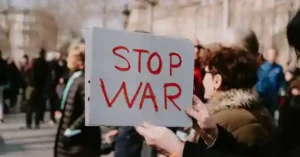
International Reactions
The international response to the recent escalation in the Israel-Gaza conflict has been swift, with global powers, regional leaders, and humanitarian organizations expressing concern over the rising casualties and deteriorating situation. The death of 15 Palestinians in the airstrike has drawn condemnation and calls for restraint from various quarters.
United Nations and Humanitarian Agencies
The United Nations Secretary-General issued a statement expressing deep concern over the loss of civilian lives and urging both parties to exercise maximum restraint. The statement reiterated the need for adherence to international humanitarian law, which requires the protection of civilians during armed conflicts. UN agencies working in Gaza, including UNRWA (United Nations Relief and Works Agency), highlighted the worsening humanitarian crisis, calling for immediate measures to allow the delivery of aid and essential supplies to affected areas.
Reactions from Key Global Powers
The United States, a key ally of Israel, expressed support for Israel’s right to self-defense but urged caution to minimize civilian casualties. The State Department called for de-escalation and reiterated its commitment to a two-state solution as the only viable path to lasting peace. However, the U.S. response faced criticism from Palestinian groups, who argued that such statements fail to address the root causes of the conflict.
The European Union condemned the violence and called for an immediate ceasefire, emphasizing the importance of dialogue and negotiation. EU officials stressed the need for both sides to prioritize the safety and well-being of civilians. Individual European countries, including France and Germany, echoed these sentiments, with some urging Israel to ensure proportionality in its military actions.
Regional Responses
Neighboring countries, including Egypt and Jordan, expressed alarm over the escalation. Egypt, which has often acted as a mediator in the Israel-Gaza conflict, called for an urgent meeting to discuss ways to restore calm and prevent further bloodshed. Jordan’s King Abdullah denounced the airstrike and emphasized the need for an end to the occupation and a comprehensive peace process.
Broader Global Reaction
Countries such as Turkey, Iran, and Qatar issued strong condemnations of Israel’s actions, accusing it of targeting innocent civilians and perpetuating violence in the region. These nations called for solidarity with the Palestinian people and urged the international community to hold Israel accountable.
At the same time, grassroots movements and activists worldwide organized protests and campaigns to raise awareness of the situation in Gaza. Social media platforms were flooded with messages of solidarity for Palestinians, alongside demands for justice and an end to the conflict.
Challenges to Mediation
The international community’s ability to mediate effectively has been hindered by deep-seated mistrust between the parties and diverging geopolitical interests. Efforts to broker a ceasefire often face obstacles, including the lack of agreement on preconditions and the absence of a comprehensive framework for long-term peace.
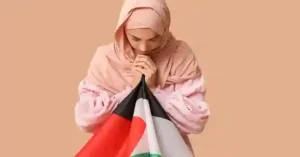
Humanitarian Challenges and Relief Efforts
The recent airstrike in Gaza, which resulted in 15 deaths and numerous injuries, has further strained an already dire humanitarian situation. Gaza’s residents, who have long endured the consequences of the blockade and periodic escalations, now face additional hardships as they grapple with the aftermath of the violence.
Immediate Humanitarian Needs
The destruction caused by the airstrike has displaced dozens of families, leaving them without shelter, food, or basic necessities. Emergency services in Gaza are overwhelmed, with hospitals operating at full capacity and struggling to treat the influx of injured civilians. The limited availability of medical supplies, including essential medicines and equipment, has made it nearly impossible to provide adequate care to those in critical condition.
Access to clean water and electricity remains a significant challenge. Many areas of Gaza experience frequent power outages, further complicating relief efforts and the functioning of critical infrastructure, such as hospitals and water treatment plants.
Role of Humanitarian Organizations
Local and international humanitarian organizations have mobilized to provide immediate relief to affected families. Agencies like the Red Crescent and UNRWA are working to distribute food, clean water, and temporary shelter to displaced individuals. Mobile medical teams have been deployed to reach areas where access to healthcare facilities is limited.
Despite these efforts, the scale of the crisis exceeds the resources available. Humanitarian workers face significant obstacles, including restrictions on movement, limited funding, and the ongoing blockade that hampers the delivery of aid. The destruction of infrastructure also makes it difficult to reach some of the worst-affected areas.
Long-Term Humanitarian Challenges
The airstrike has exacerbated long-standing issues in Gaza, including high unemployment rates, poverty, and food insecurity. Over two-thirds of Gaza’s population relies on humanitarian assistance to meet basic needs, a figure that continues to rise with each escalation.
The psychological impact of the conflict, particularly on children, is profound. Many survivors of the airstrike, including young children, are likely to suffer from trauma and post-traumatic stress disorder (PTSD). Mental health services, which are already limited, struggle to provide support to those in need.
Calls for International Support
Humanitarian organizations have called for increased international funding to address the immediate and long-term needs of Gaza’s population. They stress the importance of lifting restrictions on aid delivery to ensure that critical supplies can reach affected areas promptly.
Several international actors, including the United Nations, have urged Israel to facilitate the entry of humanitarian aid into Gaza. They also emphasize the need for sustained efforts to rebuild damaged infrastructure and create conditions that allow residents to lead dignified lives.
The Path Forward
Addressing Gaza’s humanitarian challenges requires more than temporary relief. Sustainable solutions involve ending the cycle of violence, lifting the blockade, and investing in long-term development projects to rebuild infrastructure and improve living conditions. Without these measures, the people of Gaza will continue to face recurring crises, with devastating impacts on their lives and futures.
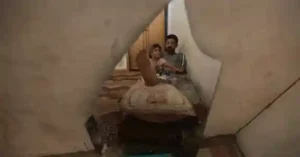
Historical Context of the Conflict
The Israel-Gaza conflict is rooted in a complex history of territorial disputes, political tensions, and competing national aspirations. Understanding the historical context is essential to grasp the recurring cycles of violence and the deep-seated grievances on both sides.
Origins of the Conflict
The roots of the conflict trace back to the early 20th century when tensions between Jewish and Arab communities began escalating in historic Palestine under British rule. The 1947 United Nations Partition Plan proposed separate Jewish and Arab states, which was accepted by Jewish leaders but rejected by Arab leaders, leading to the 1948 Arab-Israeli War. Following the war, Israel was established, while the Gaza Strip came under Egyptian control, and the West Bank was annexed by Jordan.
The 1967 War and Occupation
The Six-Day War in 1967 marked a pivotal moment in the conflict. Israel captured the Gaza Strip, West Bank, and East Jerusalem, placing millions of Palestinians under Israeli occupation. This period saw significant displacement of Palestinians and further entrenched the divide between the two communities. The occupation of these territories remains a core issue in the conflict today.
The Rise of Hamas and the Blockade of Gaza
The 1987 First Intifada, a Palestinian uprising against Israeli occupation, led to the formation of Hamas, a militant organization with a political wing. In 2006, Hamas won parliamentary elections in Gaza, leading to a split with the Palestinian Authority, which governs the West Bank. Tensions between Israel and Hamas escalated, prompting Israel and Egypt to impose a blockade on Gaza in 2007, citing security concerns. The blockade severely restricted the movement of goods and people, leading to a humanitarian crisis.
Cycles of Violence
Since the blockade, the region has witnessed multiple escalations, including large-scale military operations such as Operation Cast Lead (2008-2009), Operation Protective Edge (2014), and others. These conflicts have resulted in significant civilian casualties and extensive destruction in Gaza, as well as rocket attacks causing injuries and fatalities in Israel. Each round of violence exacerbates the humanitarian situation and deepens mistrust.
International Efforts at Resolution
Over the decades, numerous attempts have been made to resolve the conflict, including the Oslo Accords in the 1990s, which aimed to establish a framework for peace and a two-state solution. However, these efforts have repeatedly faltered due to political divisions, lack of trust, and failure to address key issues such as borders, the status of Jerusalem, and the right of return for Palestinian refugees.
Gaza’s Current Reality
Today, Gaza remains a densely populated and impoverished territory, often described as an “open-air prison” due to the blockade. The region’s residents face chronic unemployment, food insecurity, and limited access to essential services such as healthcare and clean water. These conditions, compounded by periodic escalations of violence, create a cycle of despair and instability.

Calls for Peace and Mediation Efforts
The ongoing violence between Israel and Gaza has prompted numerous calls for peace and de-escalation from both local and international communities. However, achieving a sustainable peace remains elusive, with both sides entrenched in their positions and political realities complicating any progress toward a lasting resolution. In this context, several efforts have been made over the years to mediate the conflict, but achieving lasting peace remains a significant challenge.
Efforts at Diplomacy and Ceasefires
Over the decades, a number of international actors, including the United Nations, the United States, and regional powers like Egypt and Qatar, have attempted to mediate ceasefires and brokering negotiations between Israel and Palestinian factions. One of the most notable examples is the 1993 Oslo Accords, which created a framework for peace and aimed to establish a two-state solution. These efforts, however, have not led to a comprehensive peace agreement, as they failed to address critical issues such as the status of Jerusalem, the right of return for Palestinian refugees, and security concerns for Israel.
Ceasefires, often negotiated through intermediaries like Egypt, have provided temporary relief during periods of intense fighting, but they are fragile and frequently collapse when provocations or military actions reignite hostilities. The lack of trust between Israel and Palestinian factions, particularly Hamas, has made sustained ceasefires difficult to enforce.
Role of International Mediation
International mediation efforts have generally followed the pattern of attempting to bring both sides to the negotiating table, yet many of these efforts have been unsuccessful. One of the main obstacles to effective mediation is the divergence in goals and the lack of a unified Palestinian leadership. While the Palestinian Authority in the West Bank has expressed a willingness to negotiate, Hamas, which controls Gaza, remains committed to its resistance against Israeli occupation, complicating any comprehensive peace talks.
International mediators, including the Quartet on the Middle East (comprising the United Nations, European Union, United States, and Russia), have worked to push forward peace initiatives, but these efforts have often been thwarted by changes in political leadership, shifts in the balance of power, and the continued violence. In recent years, regional powers like Egypt and Qatar have also stepped in, often playing a dual role as both mediators and supporters of one side, further complicating the peace process.
Obstacles to Lasting Peace
Several critical factors continue to prevent a lasting resolution to the conflict. These include:
Territorial Disputes:
Both Israel and the Palestinians claim Jerusalem as their capital. The Israeli government considers Jerusalem the undivided capital of Israel, while Palestinians view East Jerusalem as the capital of a future Palestinian state. The city remains a flashpoint for violence and a major stumbling block in peace negotiations.
Settlements and Occupation:
The ongoing expansion of Israeli settlements in the West Bank and East Jerusalem has been a major source of friction. The international community largely considers these settlements illegal under international law, but Israel continues to expand them, undermining the prospects for a two-state solution.
Security Concerns:
Israel’s security concerns, particularly regarding Hamas and other militant groups operating in Gaza, remain a key issue. Israel insists on disarming these groups and ensuring that any agreement guarantees its security. However, many Palestinians view these security measures as oppressive and a means of prolonging their occupation and suffering.
Internal Divisions:
Palestinian political divisions between the Palestinian Authority in the West Bank and Hamas in Gaza complicate efforts toward peace. Until a unified Palestinian leadership is formed, it remains difficult to negotiate on behalf of the entire Palestinian population.
Lack of Trust:
Years of broken promises, failed peace talks, and violence have eroded trust between the two sides. Many Israelis view negotiations with Palestinians as futile, while many Palestinians believe that Israel is not genuinely committed to peace but instead seeks to maintain its control over Palestinian territories.
Role of the International Community
The international community continues to call for a return to negotiations and a two-state solution. International organizations, including the United Nations and the European Union, have consistently called for an end to the violence, an immediate ceasefire, and renewed efforts toward a comprehensive peace agreement. However, diplomatic pressure has often been ineffective, especially when there is little political will on either side to make significant compromises.
In recent years, some international actors have shifted focus toward addressing immediate humanitarian needs in Gaza, such as providing aid and advocating for improved living conditions, without directly intervening in the broader peace process. This approach, while important in alleviating the suffering of civilians, does not address the root causes of the conflict and its political dimensions.
The Way Forward
The path to peace remains uncertain and fraught with challenges. The international community continues to encourage both sides to return to negotiations, but both Israel and Palestinian factions are deeply entrenched in their respective positions. For peace to be achievable, key issues such as the status of Jerusalem, the right of return for Palestinian refugees, borders, and security must be addressed through compromise and mutual recognition.
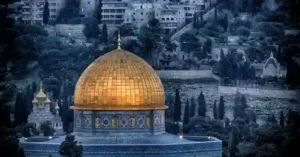
The Path Forward: Prospects for Peace and Resolution
The tragic loss of life in the recent escalation between Israel and Gaza has reignited global discussions about the prospects for peace in the region. While the situation remains highly volatile, there are several pathways and approaches that, if pursued with sincerity and commitment, may help move toward a sustainable resolution. However, any viable path forward will require significant changes in the political landscape, both locally and internationally.
A Two-State Solution: The Long-Standing Vision
The two-state solution remains the most widely endorsed framework for resolving the Israel-Palestine conflict. This vision envisions the creation of an independent Palestinian state alongside Israel, with both nations coexisting peacefully within secure and recognized borders.
For the two-state solution to succeed, several key issues must be addressed:
Borders and Territory:
The exact borders of Israel and Palestine, especially regarding the West Bank, Gaza, and East Jerusalem, need to be negotiated. This would likely involve some form of land swaps or compromises to accommodate both Israeli security concerns and Palestinian territorial claims.
Jerusalem:
Both Israel and Palestine claim Jerusalem as their capital. International consensus is that Jerusalem should be the shared capital of both states, but the specifics of its governance remain one of the most contentious aspects of the conflict.
Refugees:
The Palestinian right of return is a significant issue, as millions of Palestinian refugees, displaced during the 1948 Arab-Israeli War and subsequent conflicts, seek the right to return to their homes in Israel. A solution would need to address compensation or resettlement for refugees in a manner that balances Palestinian aspirations and Israeli concerns.
Despite international support for the two-state solution, progress has been slow. Key political obstacles, including Israel’s settlement expansion in the West Bank and Gaza’s blockade, continue to hinder meaningful negotiations. However, many still believe that the two-state solution remains the most realistic and just pathway to lasting peace.
Regional Cooperation and Support
In recent years, there has been a growing recognition of the role that regional actors can play in supporting peace efforts. Arab countries, including Egypt, Jordan, and the Gulf states, have traditionally acted as mediators in the conflict, but their role has expanded in light of changing regional dynamics.
The normalization of relations between Israel and several Arab nations, such as the United Arab Emirates, Bahrain, Sudan, and Morocco through the Abraham Accords, signals a shift in regional attitudes toward Israel. These agreements, while not directly addressing the Israeli-Palestinian conflict, have the potential to reshape regional cooperation and encourage broader collaboration toward peace.
For these regional initiatives to be truly effective, they must involve active engagement with Palestinian leadership, particularly in Gaza, to ensure that any agreements reflect Palestinian aspirations. Regional powers can act as bridges between Israel and Palestine, providing diplomatic pressure and economic support for peace initiatives.
Renewed International Engagement
For a lasting peace to be achieved, the international community must play a more active and constructive role. Efforts from the United States, European Union, Russia, and the United Nations have often been stymied by geopolitical interests and internal divisions. However, a more unified international approach could help create the conditions necessary for peace.
Diplomatic Pressure:
The international community must apply consistent pressure on both Israel and Palestine to resume negotiations and end cycles of violence. This could involve leveraging diplomatic and economic tools, such as sanctions, trade agreements, and international resolutions, to incentivize both sides to engage in dialogue.
Humanitarian Assistance:
In parallel with political negotiations, the international community should continue to support humanitarian aid efforts in Gaza, ensuring that civilians are not caught in the crossfire of the conflict. This assistance should be coordinated to address both immediate needs, such as medical care and food, and long-term development projects to rebuild infrastructure and improve living conditions.
Grassroots and Civil Society Initiatives
While high-level diplomacy and political negotiations often dominate the conversation around peace, grassroots and civil society movements have a critical role to play in fostering long-term reconciliation and understanding.
People-to-People Initiatives:
Initiatives that bring Israelis and Palestinians together at the community level can help build trust and reduce hostility. Programs focused on dialogue, joint economic projects, and educational exchanges can challenge entrenched narratives and promote mutual understanding.
Youth Engagement:
The younger generation, many of whom have grown up in the shadow of conflict, represents a critical opportunity for change. Engaging youth in peace-building activities, conflict resolution training, and leadership programs can empower them to become advocates for peace and contribute to shaping a better future for both Israelis and Palestinians.
These efforts, while challenging, can gradually shift public opinion and create a foundation for a more peaceful society. Both Israeli and Palestinian civil society groups have expressed interest in working together to address shared issues, such as human rights, freedom of movement, and economic development.
Conclusion
The Israel-Gaza conflict remains one of the most enduring and complex conflicts in modern history, marked by cycles of violence, suffering, and stalled peace efforts. The recent loss of 15 Palestinian lives in an airstrike highlights the urgent need for a renewed commitment to peace and diplomacy. While the road to a lasting resolution is fraught with challenges, the pursuit of a two-state solution, regional cooperation, and international mediation offers hope for a better future. Addressing the core issues—territorial disputes, security concerns, and humanitarian needs—requires political will, compromise, and sustained international support. Ultimately, peace can only be achieved when both sides recognize each other’s rights and aspirations, working together to break the cycle of violence and build a foundation for coexistence.
[WPSM_AC id=622]

It is true that the cruelty in Gaza is extreme. The Israeli dogs are cruel to them every day
You’ve done an impressive work on your website in covering the topic. I am working on content about Car Purchase and thought you might like to check out QH5 and let me what you think.